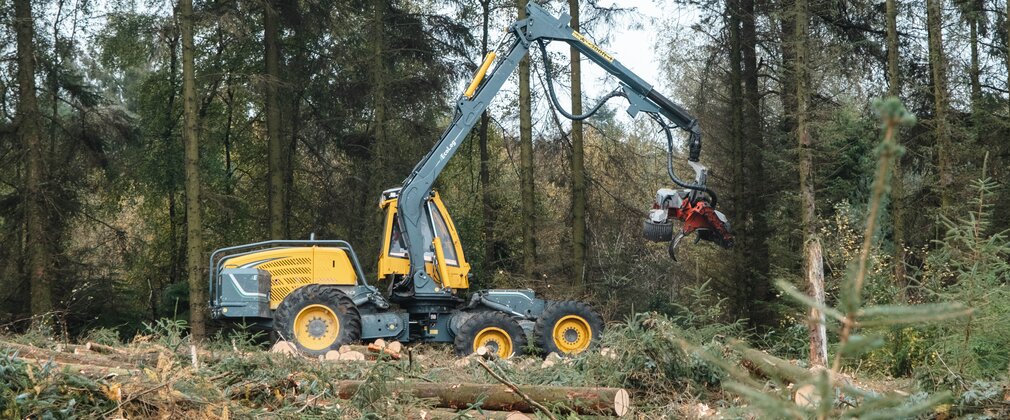Forestry operations at Bellever Forest
Bellever Forest is a working woodland producing sustainable timber. Our work has now paused until Spring 2026. This page provides more information about the work that has been done and will start again next year.
What is happening?
We are working across most of the forest to thin trees where they are growing closely together. Thinning means removing selected trees to give the remaining ones more space to grow to their potential. Thinning also allows more light to reach the forest floor, which improves the habitat for ground flora and the wildlife it supports.
The timber from Bellever Forest is certified as being sustainably produced by the Forest Stewardship Council® (FSC®) and the Programme for the Endorsement of Forest Certification (PEFC).
Can I still visit Bellever Forest?
The most important thing for Forestry England is to keep the public, our staff, and contractors safe. The forest is open for you to visit but we will be closing certain areas at times to allow us to work safely. These will be clearly signposted.
Please follow all signs and closures at all times. These are for your safety, whether or not you can see or hear us working. Forestry work is very hazardous. A falling tree can weigh several tonnes and hit the ground at nearly 60mph. If a harvesting machine chainsaw snaps, it can fly through the forest like a bullet.
What about the wildlife?
Harvesting trees is an important part of a sustainable forest lifecycle and well managed forests support more wildlife. Bellever Forest is home to a variety of wildlife, including protected birds. Before we start any forestry work, we carry out thorough ecological surveys to check for species such as birds, mammals, rodents, invertebrates, flora, and fungi. We consider these findings against complex factors including tree health, how the ground slopes, soil condition, and likely rainfall when planning work that will support our long-term management plan. There isn’t a single, perfect time of year for forestry work.
We will continue to check for wildlife while working and will adapt, pause or suspend work if we find any animal that must be protected.
Where can I find out more?
You can read our full management plan for Bellever Forest online.

